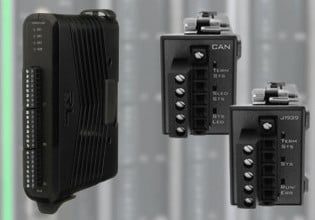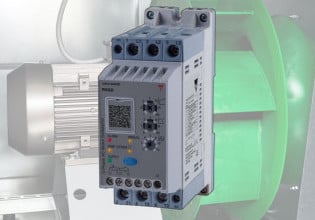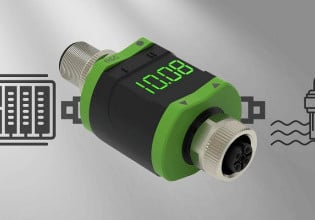Insights into Nontraditional Digitized Facilities of the Modern Age
Globally recognized companies and pioneering start-ups offer up technological stepping stones toward non-traditional digitized facilities required for Industry 4.0 operations.
Traditional industrial, manufacturing, agricultural, and commercial warehouse facilities are transitioning toward digital transformation through the use of many modern communication standards and technologies. As a result, facilities may not always conform to the typical idea of an enclosed office, warehouse, or outdoor building from which to conduct often remote business operations. 5G and IoT processes and infrastructures can be used to create digital environments, gateways, or portals that can be used to transmit, access, analyze, manipulate, and transform data to generate insights for targeted action in pursuit of business goals.
Recently, wireless alliance 5G-ACIA and non-profit connectivity organization, GSMA, announced the signing of a memorandum of understanding concerning the advancement of 5G in manufacturing and industrial automation. Non-traditional facilities are growing at an accelerated rate, thanks to such technology and partnerships, such as the end-to-end dairy technology solutions company, Stellapps, and start-up Cowlar, transforming the agricultural industry with devices targeting the dairy supply chain.

Agriculture is just one example of a non-traditional industrial facility. Image used courtesy of Stellapps
Traditional and Non-Traditional Digital Industrial Facilities
A traditional facility may typically be viewed as a building or set of buildings that houses a company's operations. A facility can be as small as a single room or as large as an entire city block. It can be used for manufacturing, warehousing, research and development (R&D), or any other type of business operation. In contrast, non-traditional facilities may include a large farm where there are no typical buildings such as those you see in cityscapes, vertical farming facilities that stack shelves upon shelves and use aquaponics to feed crops, offshore oil and gas rigs, solar/wind farms, mining quarries, and more.
Industrial operations have been evolving from traditional facilities into non-traditional digital facilities over the years, driven largely by the availability of technology. Some of the key differences between what is deemed ‘traditional’ versus ‘non-traditional’ for industrial operations is that the latter is often more cost-effective, secure, and environmentally friendly.
A non-traditional digital facility requires wireless communication to transmit data and information. Such facilities need reliable wireless communication networks which can transmit data at high speeds. This technology has been around for decades but only recently has it been able to provide the necessary bandwidth and economical price point needed for these types of industries. 5G communication is slated to play an important role in the future of these types of facilities as it will allow for better monitoring of remote locations and handle the transmission of large amounts of data.
5G-ACIA for Connected Industries
Under the MoU signed by 5G-ACIA and GSMA, both parties will be working together to improve interoperability for industrial manufacturing and gain further knowledge concerning industrial 5G deployment considerations, including networks, devices, applications, infrastructure options, and deployment models. Both 5G-ACIA and GSMA will be taking the steps required to bring 5G IoT to industrial manufacturing facilities across the globe - inside traditional facilities or not.

A partnership between wireless communication organizations will help form the landscape of remote non-traditional facilities. Image used courtesy of 5G-ACIA
In a news release from last month, the Chief Technology Officer at GSMA, Alex Sinclair, commented, “We are delighted to have agreed this collaboration with 5G-ACIA which will further the engagement between mobile network operators, manufacturers, and the wider ecosystem. This collaboration will help to advance 5G in manufacturing and industrial automation and redefine the benefits of partnering with mobile operators for 5G IoT manufacturing applications deployment. Our overall goal is to bring together trusted, strategic partners for better production quality, flexibility, efficiency, and sustainability. Enabling our members to work closely with the members of 5G-ACIA will support significant progress.”
For more information, learn about the MoU signed by 5G-ACIA and GSMA.
Dairy Gone Digital
As a recent illustration of this non-traditional concept, Bangalore-based Stellapps announced the release of a smart step counting device, known as “mooON”, that has been designed to be attached to a dairy cow's leg to track their activity levels. Although wearable technology has existed for many years, the availability of remote communication networks allows these technologies to be implemented in creative ways.
Data logged from the device is combined with data provided by farmers and vets, which is then entered into a smartphone app. The app issues reminders for routine protocols including vaccinations and artificial insemination. The aptly described “Fitbit for cattle” is intended to allow farmers to better understand and take charge of the health of their animals. Healthier animals are known to produce better quality, nutritious milk. By using the mooON device, farmers can boost milk yields and get a good price for more nutritious milk.
In India, farmers bring their milk to collection points in nearby villages where Stellapps uses an ultrasonic analyzer to measure the nutritional content of the milk. This allows for standardized price-setting and provides farmers updates on their cows' health and nutritional needs. The milk volume of delivered milk is measured at the collection points and a bank transfer is made to farmers through Stellapps “mooPay” platform. Milk is then stored, monitored for security, and then sent to be pasteurized and packaged, or converted into products like cheese or yogurt. Companies like Stellapps, including Cowlar, are aiming to bring targeted management and traceability into India's dairy industry.





